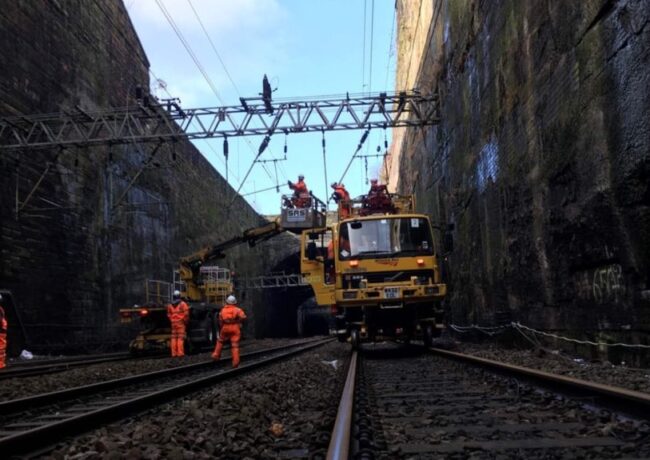Corroded structure inspected twice before Lime Street closure
Network Rail did not identify severe corrosion on a structure carrying overhead lines into Liverpool Lime Street despite carrying out two inspections in the months running up to the station’s emergency closure in January, according to information released to Place North West.
The station was closed on the weekend of 7 January after engineers found “severe corrosion” on the structure, carrying overhead lines on the approach to the station. This meant trains were unable to pass underneath.
The discovery of the corrosion caused severe disruption, with all services in and out of Lime Street cancelled, before the station reopened on 8 January.
A Freedom of Information request has revealed the structure was looked at in both October and December 2017 before any damage was found.
Network Rail said the structure “underwent some preparatory facilitation work, including cleaning” as part of the station’s enhancement project, which was carried out between 30 September and Monday 23 October.
The three-week project saw engineers install a signalling system to improve service reliability, and the replacement of around 2km of track. Two additional platforms were also built as part of the project.
The work was carried out by S&C Northern Alliance, a joint venture between Amey and Sersa.
The “preparatory works” identified the need for a more detailed inspection of the structure. Two months later on 26 December, Network Rail carried out its regular inspection from ground level, which did not identify any corrosion.
These ground-level checks are carried out on an eight-weekly basis, and any damage or issues would ordinarily be dealt with on a responsive basis.
The detailed structural inspection then took place on Saturday 6 January by an Amey engineer. The inspection included the removal of “further debris and corroded metalwork at the gantry support”, which revealed the need for “immediate action” from Network Rail to replace the structure.
Network Rail said that following the discovery of the corrosion, “a proactive inspection of similar structures” at the station was “conducted immediately”.
Network Rail added it was “unable to give precise dates for all support structures at Liverpool Lime Street”, as “specific inspections at each gantry are programmed throughout the year on an annual basis”.
High level inspection of overhead line equipment is carried out annually, using an access platform, and inspection is carried out weekly from a train cab.
Network Rail added that any cleaning of insulators that keep live and non-live equipment, as well as technical analysis and assessment of the structures, is undertaken “as required”.
The measurement of the distance of overhead wires from the centre line of the train track is carried out every 12 years.
January’s closure was the second such incident in the last 12 months. The station was shut in March last year after a supporting wall collapsed onto the track, caused by historic double-stacking of storage containers on the plot above. Around 200 tonnes of rubble and soil fell 12 metres onto the tracks, leading to the closure of the station.
A report by the Rail Accident Investigation Branch found there had been four detailed inspections of the land since 1997, but Network Rail had not undertaken an on-site inspection since 2014, meaning that excess pressure on the supporting wall was not identified.
Two visual examinations were carried out in 2016, but no staff from Network Rail accessed the land behind the wall which was to collapse, and instead looked at the site using binoculars from track level, and observed the retaining wall from above the cutting, via Smithdown Lane.
In its conclusions, the RAIB argued that Network Rail “did not have a suitable risk prioritisation in place to guide the scope and depth of the structures examinations carried out on the retaining wall”.
Network Rail was contacted for comment.




